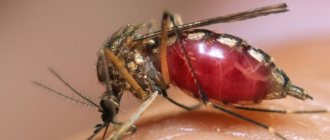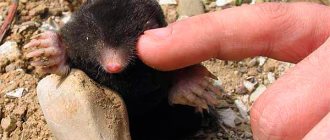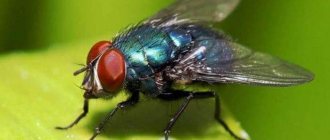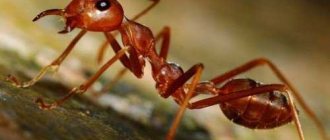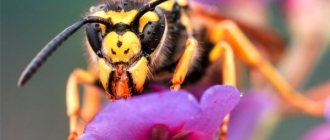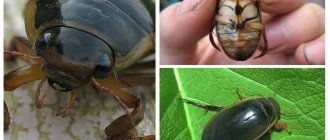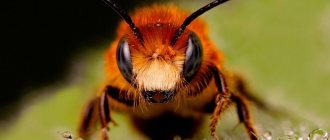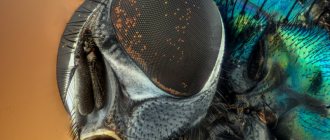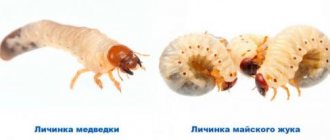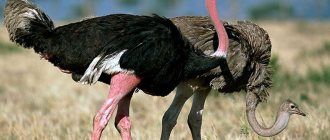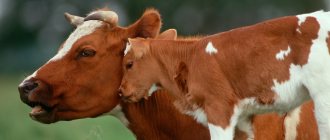How many legs do insects have?
Adults of the insect class have three pairs of limbs. The thoracic region of their body consists of three segments, each of which carries one pair of legs. They are attached to the underside in the thoracic region.
What kind of limbs do insects have, how are they structured, and what functions do they perform...more on that below.
What about centipedes and spiders?
Contrary to popular belief, and even to the name, the centipede has not forty legs, but only thirty. By the way, they appear in an extremely interesting way in an invertebrate. At the beginning of its existence, it has only eight legs (almost a spider). Then the centipede begins to grow, the body lengthens, and additional limbs gradually grow. It turns out that the question of the number of legs of a centipede is closely related to its life expectancy.
And this creature treats its limbs very carelessly. As soon as it senses a threat, for example, a paw is stuck to the web, without thinking twice, they simply get rid of it. We can say that this is a kind of defense mechanism. Very convenient, isn't it? Especially considering that the centipede is capable of regenerating limbs.
Spider... Strange as it may sound, this representative of the animal world is not an insect. It has eight legs, not six, like insects, and the body consists of only two parts (the cephalothorax and the abdomen). In most cases, all spiders are predators, while insects mostly feed on vegetation.
How are the limbs of insects arranged?
The class insects belongs to the phylum arthropods. This name confirms the structural features of the legs of insects: they consist of several segments.
The main segment attached to the corresponding segment of the chest is called the coxa. The basin has a strictly defined shape. It differs among different types of insects. In some representatives the coxa looks like a ball or transverse cylinder, in others it looks like a cone or a wide leaf. The mobility of the limb depends on the shape of the coxa. The smallest segment is called the trochanter. Sometimes it is double. The trochanter is motionlessly articulated with the femur.
The longest component of the limb is the femur. It is longer than all parts of the leg and looks like a long cylindrical stick.
The next section is called the lower leg. It is comparable in size to the thigh, and together with it makes up the longest part of the insect’s limb.
The thigh and lower leg are connected using the knee. The leg ends with a paw. It consists of several flaxes movably connected to each other, their number is 2 - 5. The foot is armed with small claws. Usually there are two, and extremely rarely one.
Even dark insects that fly or swim need legs.
Main distinguishing feature
Very often, many people who do not know biology well confuse ants with mites or spiders. In fact, the answer is simple - mites have 8 legs, and ants have 6 legs. Our arthropod fauna includes only spiders, ticks and ants. There are some beetles that can imitate the body shape of an ant in order to enter their nest. It is quite difficult to distinguish them from ants.
Laboring insects use their legs for more than just running. Due to the peculiarity of placing them wider than its body, as well as their strength, the insect lifts the weight above itself and carries it. The mass of the load can be 50 times the total mass of the ant itself.
The feet are also used to measure distance. This is what ants living in deserts do. They serve as a navigational tool for them. The insect remembers how many steps it takes before turning and makes corrections, focusing on the angle.
Scientists have discovered an odor in the feet of ants that releases strong-smelling pheromones. These substances are used for marks during movement. Thanks to this, other individuals can follow the path, since it will become noticeable to them. A large number of marks will attract more brothers.
Sometimes mistakes happen in placing the marks, after which the rest of the ants begin to lose their way and run in a circle. They close their path with a fresher trail, which can later become a real disaster for the whole family.
Thanks to their thin but mobile legs, ants are able to work wonders, performing very difficult daily work.
Types of Insect Limbs
The most ancient are the running and walking legs of insects. The remaining types of limbs appeared in the process of long-term development, and, as a rule, are associated with various adaptations to environmental conditions.
- Running limbs
The running legs have an elongated shape. They are slender, and the tarsus, lower leg, thigh and coxa are narrow or wide. This type of limbs is present in cockroaches and ground beetles.
- walking legs
Walking legs are designed for slow movement. These are the legs of beetles - longhorned beetles, leaf beetles, crawling from leaf to leaf, leisurely gnawing leaves.
Insects need limbs to move around.
- Swimming limbs
The hind legs of insects usually become swimming, and less often the middle legs. They are covered with long hairs that form a wide rowing surface - a kind of oar. Basically, representatives with such limbs live in bodies of water and swim and dive excellently. These are swimming beetles, smooth bugs, and water lovers.
- Jumping legs
Representatives of the order Orthoptera have jumping legs. These include locusts, grasshoppers, and crickets. Their last pair of legs is very long and powerful. Many representatives of Orthoptera jump in heights of up to eighty centimeters, and if they spread their wings at the same time, the distance covered in one jump reaches about ten meters.
- Digging legs
Digging legs are characteristic of the mole cricket, dung beetle, and May beetle. Usually the first pair of legs become digging legs. The limbs of this type are powerful, flat and short.
The legs of grasshoppers give them the ability to move tens of meters in a matter of seconds.
- Collective limbs
The limbs of bees and bumblebees are called collective or basket limbs. On the hind legs of these insects there are special areas surrounded by long chitinous hairs; these are baskets. Bees move from flower to flower and get dirty in the pollen that sticks to the hairs of their bodies. With special brushes located on the legs, the bee collects flower pollen into baskets.
the adhesive dust particles form a lump called “polnoka”. The bee carries pollen into the hive and deposits it in the honeycomb. Bee bread soaked in nectar is formed; it serves as a reserve protein food for the entire bee family.
Thanks to the collecting type of legs, the bee can “save” pollen.
- Grasping legs
Grasping legs of a praying mantis. They are armed with sharp spines, which the predator uses to hold its prey.
- Suction limbs
The legs of males of some species of insects - swimming beetles and ground beetles - have expanded segments at the ends of the legs. During the breeding season, males use these devices to grasp females during mating.
Grasping legs help not only to hold prey, but also to the female during mating.
What can beetles do with their legs?
Representatives of the order Coleoptera can live in a wide variety of conditions. Some of them live in sandy deserts, while others have completely adapted to life in water. For this reason, the structure of the limbs can vary greatly. Beetles have several main types of limbs:
- Walking . The tarsus of such limbs is usually wider and flattened, and its underside is covered with many hairs.
- Runners . Legs designed for running look slimmer and more graceful. The tarsus is narrow and consists of 5 segments.
- Digging. Most often, the legs of the front pair are digging and their distinctive feature is a wide, flat shin, surrounded by teeth on the outer side.
- Swimming . Characteristic of waterfowl species. The tarsus and tibia of the swimming legs are strongly flattened and widened, and also densely covered with hard hairs.
- Jumping . This type of limb usually includes the hind pair of legs. Their distinctive feature is thick and strong thighs.
- Grasping . They are used by predatory species to capture prey, or help males hold the female during the mating process. These legs are usually very thin and long.
Why gears?
While studying the number of legs in insects of different classes, their structure and functions, scientists came across an unexpected fact. Some of them have an interesting mechanism in their structure - a gear. Schematically, it can be represented in the form of two jagged wheels that are interlocked. Through the protrusions they interact and synchronize movement. Why is this? It turns out that this mechanism allows insects to jump at tremendous speed. This miracle lives in America, it is called Jesus. It is not capable of flight, but it makes amazing jumps. Even a speeding car will not be able to overtake it during takeoff. It is interesting that these legs are located not on the sides, but at the bottom of the insect. This makes his life problematic. If you do not push off synchronously, then the jump will not work. The insect simply circles on one leg. Evolution has eliminated this effect with a mechanical device whose purpose is to make the shocks synchronous. The scientists' surprise knew no bounds. This is the first recorded fact of the use of engineering in the structure of living beings.
Many people are confused about the types of invertebrates when answering the question of how many pairs of legs insects have. Spiders and centipedes of all kinds are mistakenly included among them, which is fundamentally incorrect. Later we will say a few words about them, but for now we will turn our attention to representatives of the Insect class.
Who is he, the cockchafer?
Its skeleton is chitinous, which is why it is so durable. The size of the insect varies from 2 to 3 cm, but can reach 4 cm. The mechanism of color dimorphism of these beetles is interesting (that is, related individuals can be very distinguishable by the color of the body). The color often changes depending on how many legs the cockchafer has. Beetles with red legs have a red body, and those with graphite legs have a black body. Color also affects the habitat. Blacks love darkened forests, reds prefer open areas.
Dragonfly and others
Another amazing representative of the insect world. This flyer uses her limbs in a special way. Her legs are equipped with stiff bristles. When a dragonfly flies, it arranges its limbs in such a way that it forms a kind of net. With this device she gets her food!
Small insects, caught in the interweaving of bristles, immediately become prey and are eaten by the dragonfly. The variety of ways and methods of using insect legs is truly enormous. They are not only designed for walking, like mammals. They are used to row, and cut, and grab. Insects also use their legs to clean their antennae. For this purpose, the limbs are equipped with special grooves. But some species of butterflies use their front legs exclusively for rubbing their eyes. These limbs are atrophied and equipped with special hairs.
